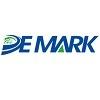
Content sponsored by:
Hangzhou DE Mark Industrial Co Ltd
Prices Hold, Pressures Build: What’s Moving the Veterinary API Market
Published: August 10, 2025
Source : Ronnick FONG
The veterinary APIs market is experiencing stability with prices across most categories showing minimal fluctuations and a gradual absorption of channel inventories. Key products like doxycycline, neomycin sulfate, and erythromycin thiocyanate have sustained steady prices attributed to factory maintenance and restricted order policies. However, certain sectors are encountering sustained price pressures due to the gradual introduction of new production capacities. Market activities are conservative, primarily focused on categories with higher circulation momentum. Despite ongoing supply-demand imbalances, significant relief remains elusive. In the short term, the veterinary API market is expected to endure pricing pressures, allowing for negotiated adjustments while maintaining overall stability with minimal deviations.
FLORFENICOL
On 30/Jul, the market price of florfenicol averaged 176 yuan/kg, showing a month-over-month decrease of 1.67%. This decline represents a new low for the year and a significant 11.94% drop since the start of 2025. The ongoing weakness in florfenicol prices can be attributed to fierce competition among manufacturers, sluggish demand, and the adoption of novel production techniques.

Despite the continuous downtrend in florfenicol prices, there are signs that this downward trend is gradually losing steam and nearing the cost threshold. The transition from traditional chemical synthesis methods to newer biological processes has not yet yielded clear cost reduction figures or identified the price floor. The future stability of florfenicol prices may hinge more on the resurgence of demand in the market.
AMOXICILLIN
The market is showing significant interest in amoxicillin, leading to reduced inventories in trade channels. Procurement is minimal, and sales are moving swiftly, contributing to a weaker market price index for this period.

DOXYCYCLINE HCL
The market price of doxycycline has shown signs of stabilization after a period of decline since June. As of 23/Jul, the average market price stands at 365 yuan/kg, marking a modest increase of 0.55%. This shift can be attributed to upstream raw material manufacturers maintaining prices and managing inventory levels effectively.

Despite the recent price stabilization and slight rebound, the overall supply and demand dynamics have not experienced significant changes. While supply constraints have contributed to price stability, weak demand and challenging market conditions have tempered the potential for a substantial recovery. In the near term, price fluctuations are anticipated, driven by companies adjusting their pricing strategies to enhance market positioning. However, the market lacks robust positive catalysts to drive significant upward momentum at this time.
TYLOSIN & TILMICOSIN
This month, the market price of tylosin tartrate is experiencing a correcting trend. On the 30/Jul, the average market price reached 293 yuan/kg, reflecting a 1.37% decrease from the previous month. This shift is attributed to several key factors:

Initially, a prior supply constraint had driven prices up, causing a surge in inventory levels. Subsequently, weak demand from the farming sector has failed to provide substantial price support. Lastly, reduced market trading activity has prompted a price adjustment following consecutive increases, resulting in a mild downward trajectory.
The market conditions for tiamulin and tylvalosin mirror this pattern, indicating a similar scenario across these segments.
VITAMIN MARKET
The vitamin market shows a mix of stability and weakness, with most categories facing price pressure and operating within a narrow range. Notably, prices for VA,VB1 and VD3 remain strong as major factories maintain firm pricing, offering temporary support. Conversely, Folic acid experiences weak operations due to low demand. Nicotinamide factories have ceased reporting, contributing to decreased demand and a pause in price declines.
In the immediate future, the market lacks significant driving forces for change, indicating a continued trend of weak consolidation and limited price fluctuations. Despite this, trading channels present numerous opportunities for bargaining on inventory items, given the variety of brands and production dates available.


Vitamin A (500,000IU/G)
The vitamin A market is currently operating steadily. In the middle of the month, some vitamin A manufacturers paused quotations and raised prices, resulting in a notable enhancement in the domestic market's shipping dynamics. This shift has prompted downstream users to engage more actively in acquiring goods.

Vitamin E 50%
The market continues to see stable quotations from mainstream producers, supported by ongoing factors. However, the market persists a notable lack of substantial improvement in demand, with the primary emphasis still on inventory reduction.

Interestingly, certain producers have opted to increase export prices for feed-grade vitamin E, diverging from the general market trajectory. Looking ahead, it is crucial to monitor upstream pricing approaches and the developments regarding BASF's resolution of the vitamin E force majeure.
D-Calphan
The D-Calphan market is currently experiencing a period of weakness, as prices have dropped to historically low levels, almost aligning with production costs. This scenario is putting the producers under considerable sales pressure,leading some distributors to sell off their inventories at reduced prices due to the ongoing sluggish demand. Market projections indicate a continued lackluster outlook, with prices anticipated to hold steady or even weaken slightly in the near future.

Vitamin K3 (MSB)
Recently, there has been a slight adjustment in the raw material prices of vitamin K3, with leading manufacturers slightly reducing their quotes. However, trade channel prices continue to vary. Moving forward, the focus will be on production levels and actual transaction volumes.

AMINO ACIDS MARKET
The recent market dynamics in the amino acid industry are showing interesting shifts. Following the EU's final anti-dumping ruling on lysine, coupled with decreasing downstream inventories, lysine prices from various upstream manufacturers have seen a decline. This situation could potentially pave the way for a notable uptick in lysine exports.
In contrast, the threonine market is experiencing a different trend as mainstream manufacturers are lowering their prices amidst sluggish shipments. Some are even combining sales with 98% lysine, indicating a strategic approach to boost sales.
Meanwhile, the methionine market is maintaining stability in its pricing, offering a sense of consistency in an otherwise fluctuating market environment.
Valine market quotations are currently steady, but the market sentiment is cautious due to the EU's preliminary anti-dumping ruling on valine. This has prompted a sense of uncertainty, leading to a wait-and-see attitude among market participants.
On the other hand, tryptophan manufacturers have taken a different stance by increasing their price quotations, showcasing a contrasting behavior compared to other amino acids in the market.
In the first half of 2025, the egg and broiler chicken farming sectors experienced a downturn, marked by a 4.7% and 5.3% decrease in the average price of compound feed, respectively. Conversely, pig production saw a positive shift with a 5.3% reduction in the price of compound feed. These fluctuations in the market are anticipated to greatly influence the demand for feed additives, particularly impacting the supply dynamics of vitamins and amino acids.

Declaration:The prices indicated in this newsletter are for your reference only and do not constitute a solid offer by our company. The transaction price shall be determined by both parties through negotiation based on the quantity and transaction conditions.
Related topics:
Mentioned in this news release:

Recommend
Comment
Share

Would you like to discuss another topic? Create a new post to engage with experts in the community.


